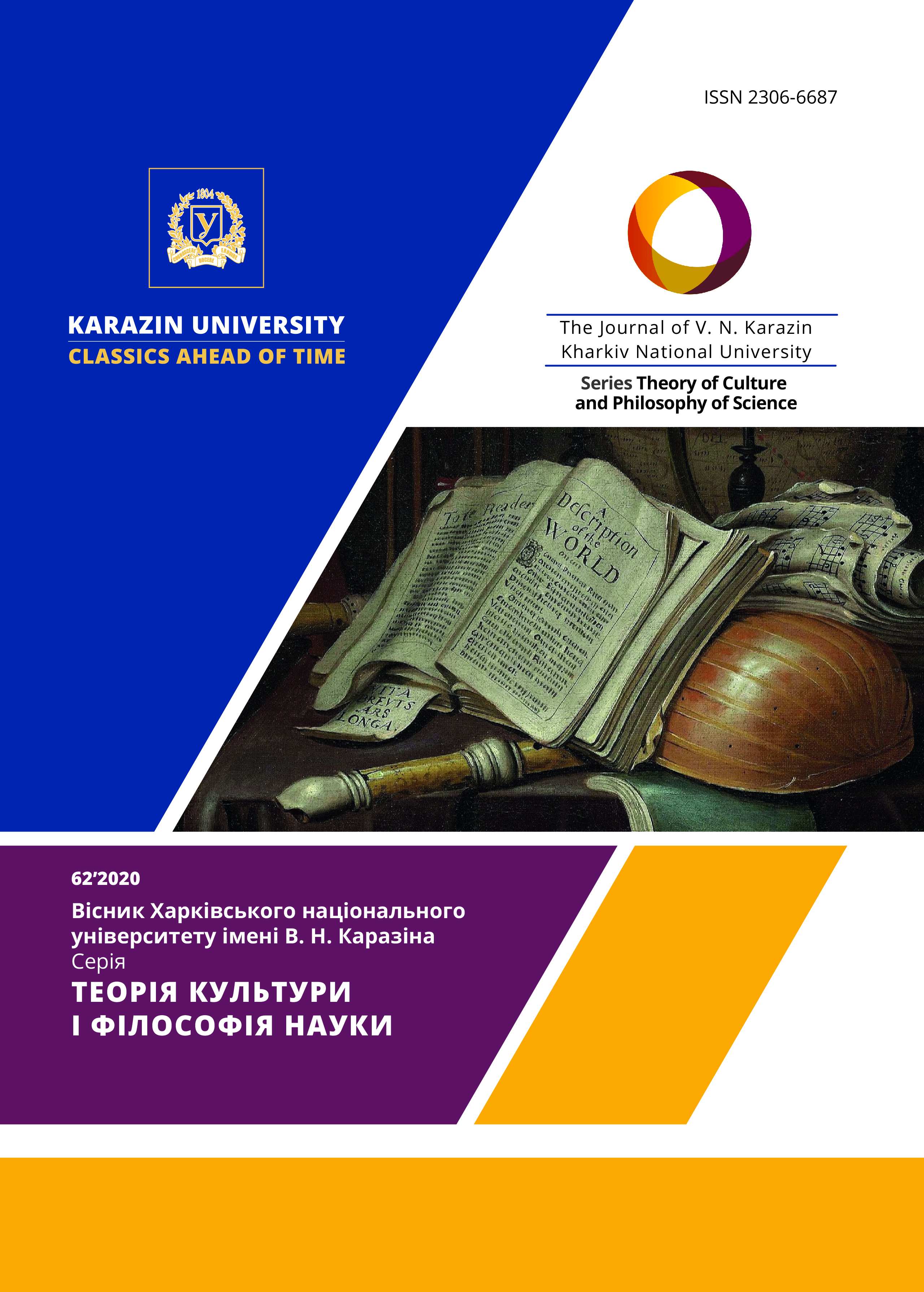ІДЕЯ ОТІЛЕСНЕНОГО («EMBODIED») РОЗУМУ В ЯКОСТІ ОБҐРУНТУВАННЯ ТІЛЕСНОЇ РАЦІОНАЛЬНОСТІ
Анотація
Питання раціональності Пост-Просвітництва звертає до себе думки вчених різних галузей. Автор вважає, що її розуміння необхідно посилити зверненням до тілесної раціональності. Розуміючи її як нормативну інтерактивність, оформлення якої чітко диктується морфологією тіла і має прикладний характер, вважає, що для її більш ґрунтовного розуміння необхідно звернутися до останніх робіт відомих фахівців в галузі семантичної та когнітивної лінгвістики ‒ Дж. Лакоффа та М. Джонсона. Вони висувають такі головні тези: мислення за природою має тілесне забарвлення, думки формуються здебільшого на ґрунті несвідомого, а абстрактні поняття в основному метафоричні.
Згідно ідеї отілеснення, людина ‒ це істота, яка підвладна центральній нервовій системі. Тобто людина може думати тільки про те, що пропускає розум-тіло (отілеснений / втілений розум). Відштовхуючись від роздумів про виникнення метафор, вони приходять до висновків, що тіло людини визначає комплекс фундаментальних просторових відносин, які використовуються не тільки в процесі самоорієнтації, але і в процесі сприйняття просторових відносини між об'єктами. Опис тіла та наші уявлення, розуміння, складність роздумів формуються за рахунок системи ментальних образів і моторики. Тіло і сенсомоторна система є ключовими компонентами концептуальної схеми. Само ж мислення протікає на рівні «когнітивного несвідомого» (цей рівень мислення охоплює автоматичні когнітивні операції, приховані знання, приховані переконання тощо). Таке «когнітивне несвідоме» виробляє свідоме мислення. Вони допускають, що джерелом категорій є нервові структури і тілесний досвід, а для утворення абстрактних понять застосовуються терміни отілесненого характеру. Такі «втілені абстрактні поняття» є основою мислення, а це означає, що людське мислення також є отілесненим/втіленим. Тим самим ідея отілесненого/втіленого розуму підтверджує відмову від картезіанської дихотомії розум-тіло як антинаукової, а будь-яке розуміння раціональності повинне враховувати тілесну раціональність.
Завантаження
Посилання
Гумбрехт Х.У. Производство присутствия: Чего не может передать значения. 2006. URL: http://www.history-library.com/index.php?id1=3&category=arhiologiya&author=gumreht-hu&book=2006
Лиотар Ж.-Ф. Постмодерн в изложении для детей. Письма: 1982-1985. 2008. URL: https://platona.net/load/knigi_po_filosofii/postmodernizm/liotar_postmodern_izlozhenii_detej_pisma_1982_1985/54-1-0-2857
Мерло-Понти М. Сомнения Сезанна. 2013. URL: https://theoryandpractice.ru/posts/7647-cezanne
Лакофф Дж. Переносчик значения. 1999. URL: http://wellpractice.ru/bloglakoff
Dolska O. Time to think about bodily Rationality (the stands of the sporting events are empty!) 2020 URL: https://mail.google.com/mail/u/0/#inbox/WhctKJVzXHgqpnBnZRcjwCRWdnTBlFxKwknDGDWRLqxzrfLGdhCZWxHbsNSSgXMPdZXntxl?projector=1&messagePartId=0.1
Ingold T. Culture, nature, environment: steps to an ecology of life. The Perception of the Environment. London: Routledge, 2000. P. 13-27. URL: www.academia.edu
Johnson M. The Meaning of the Body: Aesthetics of Human Understanding. Pdf. The University of Chicago Press. Chicago & London, 2007. URL:
Johnson М.,. What Makes a Body? Article in The Journal of Speculative Philosophy, 22(3) : 159-169. January 2008. DOI: 10.1353/jsp.0.0046. URL: https://www.researchgate.net/publication/236769484_What_Makes_a_Body
Lakoff G. and Johnson M. Philosophy in the Flesh: The Embodied Mind and its Challenge to Western Thought (University of California, Berkeley and University of Oregon) New York: Basic Books, 1999. URL:
Lakoff G. The reality club Philosophy in the Flesh. A talk with George Lakoff, 1999. URL: https://www.edge.org/3rd_culture/lakoff/lakoff_p1.html (дата 16.08.2020)
Seel M. Aktive Passivität. Über den Spielraum des Denkens, Handelns und anderer Künste. Frankfurt am Main : S.Fischer Verlag GmbH/FISCHER Kinderund Jugendbuch Verlag GmbH, 2013, Hardcover, 384 S., URL: https://humanismus-aktuell.de/media/2017/11/rezension_seel_rs_aktive_passivitaet.pdf
Sheets-Johnstone M. Foundational Dynamics of Animate Nature in Zwischenleiblichkeit und bewegtes Verstehen - Intercorporeity, Movement and Tacit Knowledge. 2016. Pр. 51–68. DOI: https://doi.org/10.14361/9783839435793-003 URL: https://transcript.degruyter.com/view/book/9783839435793/10.14361/9783839435793-003.xml




